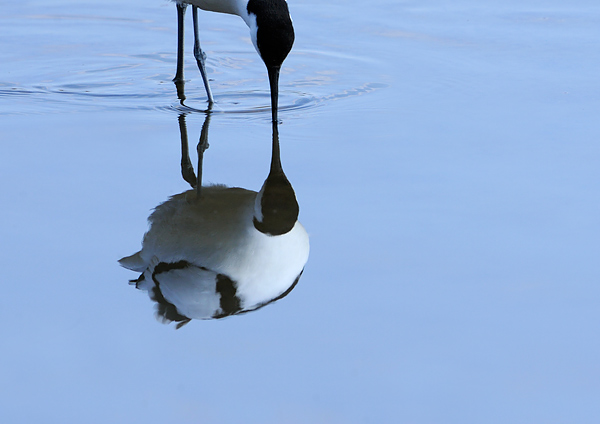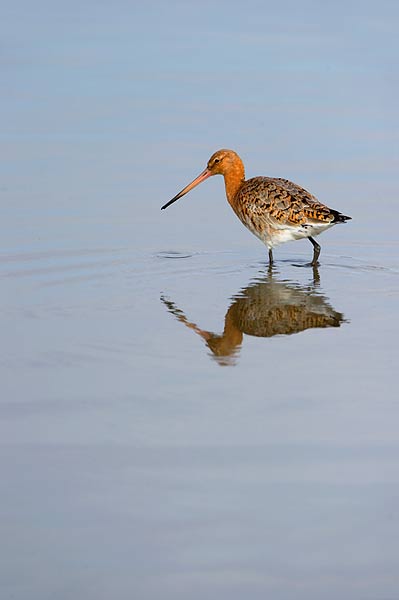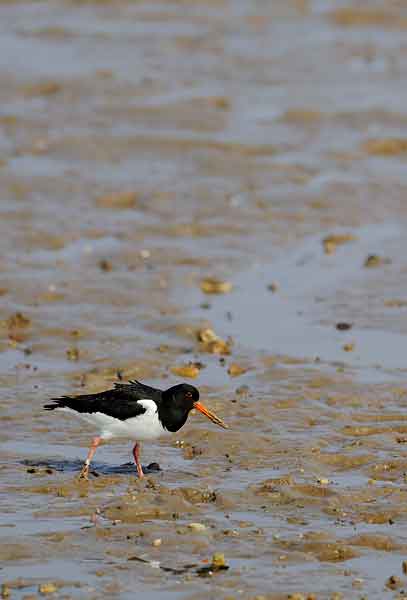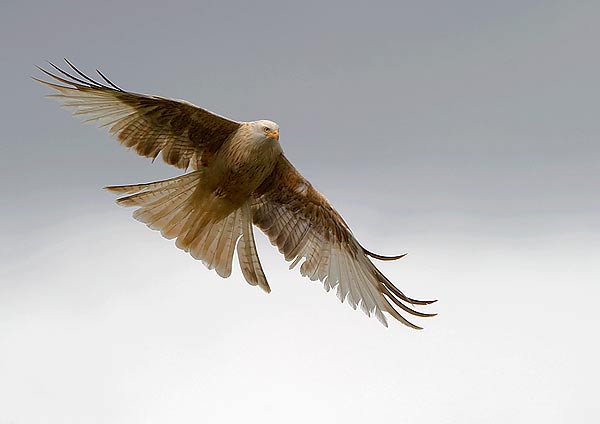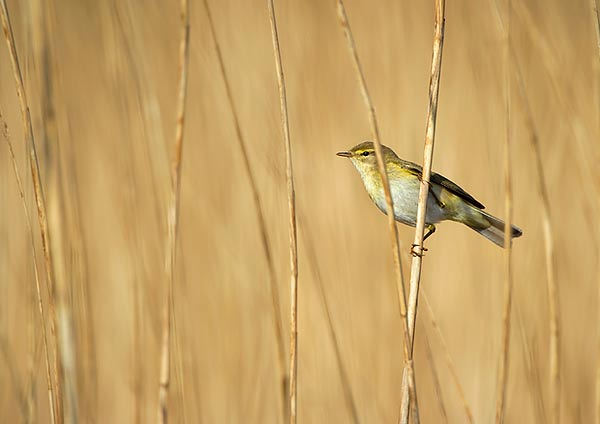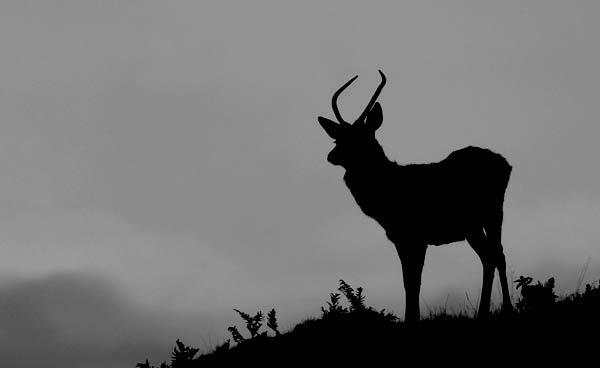RAW India
I have just come back from an amazing trip to Ranthambhore, India amd after three months of planning the trip was all I could have hoped for and much,much more. With British airspace being closed on the lead up to my trip it looked however I tired that I would be beaten by an unprecedented event in history-Volcanic dust in the atmosphere, but lady luck was on my side and a few days after my first flight was cancelled the airspace was reopened and I was back in business! Last Saturday I made my way to Heathrow Airport,Terminal 5. British Airways,who during the issues were great in the help to customers and I for one will always use this airline from now on. The flight was nearly 9 hours,very comfortable, good food. As we landed in Delhi Airport at 11.30pm local time the captain welcomed us and let us know the time etc and the temperture which at 11.30pm at night was 35c!


I passed through customs with no problems having sorted my visa some months earlier, and I looked for my driver who would be holding a card with my name on,we met, his name was Ellios, and ahead of me was a 373km drive to Ranthambhore Bagh seen above where I was to be staying throughout the 7 days there. The journey was hard and hot,the roads were hard and not like roads we know back home but I was on a high and the journey had to be done..I reached Ranthambhore Bagh at 08.30am after seeing the sun come up as I passed through small villages, it was a beautiful sunrise. I met my hosts and Salim Ali who was to be my guide during my stay. Salim had grew up in the area as his dad was a ranger/guide in Ranthambhore before him so I was in the best hands. I went to bed until around 02.00pm where a little dinner was put on and then my first safari at 03.00pm with Salim and Raj. I had a jeep on my own throughout the week, it was a great choice as this gave me great flexibility as I was using my 600mm lens and tripod alongside a 24-70 and 70-200mm lens with D300’s to hopefully cover many different images/angles.

The Ranthambhore National Park, which is a part of the much larger Ranthambhore Tiger Reserve, a Project Tiger reserve, lies in the Sawai Madhopur district of eastern Rajasthan. It is right now the only forest reserve in Rajasthan state and in the entire Aravali hill ranges where tigers exist. The Chambal River forms a natural boundary of the Park towards the east, and on the eastern shore of Chambal lies the central Indian state of Madhya Pradesh,this Project tiger reserve spans over 1334 sq. km of area, of which 282 sq. km is the Ranthambhore National Park.
During the 19th century there was excellent forest cover almost all over India. The population density was very low and exploitation of forests to fulfill local needs was negligible. During that period the forests of Ranthambhore were the private and exclusive hunting reserves of the Jaipur and Karauli royal family. These forests were managed by the Shikar Khana Department (Hunting Department) of the state. The local villagers were allowed to take many kinds of forest produces in unlimited quantities for their private use, after payment of an annual tax (called Babs). In selected areas of the forests, which were used for hunting by the royalty, grazing and tree felling were strictly forbidden, but there were few restrictions, elsewhere. However, due to the low population density, there was hardly any damage to the forests.
By the end of the first quarter of the 20th century, the need for conservation of forests was being felt all over India. The population was growing rapidly and the forests were coming under pressure. In Ranthambhore, the system of “royalty permits” for commercial felling (mainly for firewood and charcoal) of entire blocks of forests was taking its toll. In 1925, the Jaipur state created a post of Superintendent of Forests and in 1939 the Jaipur Forest Act was enacted. The Rajasthan forest Act was enacted in 1953, giving these forests some legal protection. In 1955, these forests were declared as “Sawai Madhopur sanctuary” and the practice of sale of forest produce through “royalty permits” came to an end. This was when the forests received their first “real” protection. However, legal hunting continued unabated till 1973 and by then the tiger population was almost totally decimated.
In 1973 a part of this sanctuary came under Project Tiger Scheme. At that time there were 16 villages inside the sanctuary but between 1976 and 1979, 12 of these villages were shifted outside the sanctuary. In 1980, in order to give greater protection to the forests, an area of 282.03 sq. k.m. of the inner part of Sawai Madhopur sanctuary was declared as national park.During the 1970s, tiger sightings were extremely rare in Ranthambhore but by the mid and late 1980s, as a result of the decade long protection given to the forests, Ranthambhore became the best place in the world to see wild tigers. Ranthambhoretiger reserve attained notoriety for illegal poaching of tigers in the year 1992.. Since then the forest authorities became very strict and now, generally speaking, poaching is not a serious threat in these forests. Since 1992, the tiger population has gradually recovered and in 2002 the Park boasted of nearly 40 tigers, a density of nearly 10 tigers per 100 square k.m. – which is one of the highest in the world,with the present count around the same which is great news for the Tiger within this area of India.

There are seven’ old’ gates within the national park and twice a day we passed through the gate called ‘Mishra Dhara Gate’ as seen above on our way to one of the 5 zones you are allocated before each trip,with each zone being around 25 km plus in size where your jeep has to stay on a small path which takes you around the chosen zone,with a very strict code of conduct on board eg.no shouting/loud noise, you cannot get out of the jeep, its all controlled really well with the Tigers welfare being paramount. The terrain of Ranthambhore Tiger Reserve is mostly rugged and hilly,with day time temperatures of 45c its very hot and dusty. For me carrying my 600 as we drove around over the bumpy terrain was hard at first as I rested it on my forearms as the roads were just to bumpy to place it any where, with your heart in your mouth all the time as to that magic word you hope to hear all the time -‘T’iger’! Then seconds to compose yourself and your camera before the Tiger has gone.
On my first trip on the Sunday we didn’t see any Tigers, but I got a good idea of the place,how it worked a little, where the sun came up and set etc. I can connect with a new place really well and get a good or bad feeling almost there and then, most of the time being proved right, I call it my ‘Sixth Sense’ or luck who knows! On this occasion I had a good feeling I would see a Tiger for the first time in my life since my fascination with Tigers after receiving a book called Animal World from my late mum for my 8th birthday, the book forms part of my Profile images on my website,and with some thirty years now passed since I first received this book my dream of seeing a Tiger was about to happen!
The routine in the morning was an early start at 05.00am, get my cameras+lens ready, the staff would make me an Indian coffee which was the perfect start to the day for me, Salim+Raj arrived at 05.40 and we set off to the park on my first morning. I always relax when trying to find nature as I have found if you put pressure on yourself then the nature just doesn’t show up! My first morning there was beautiful,we had a lovely sunrise,the noises of the place were so different to that of the UK wildlife I am use to, so many different calls it was just an amazing time!
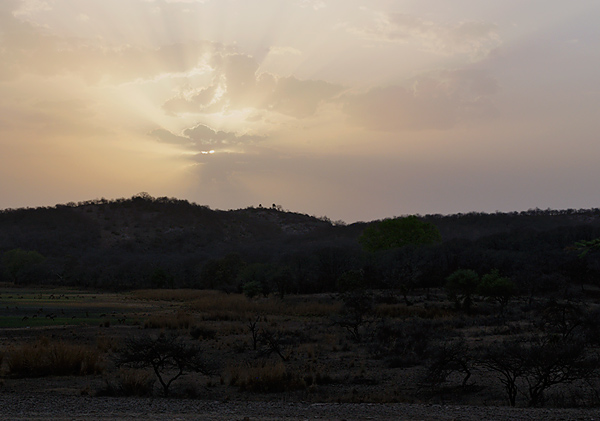
I watched Great and Little Egrets fishing, Night Herons watching the sun come up, India Lapwings, male Peacocks displaying, and so many different species of birds I’d only read about before that were just all around me here!


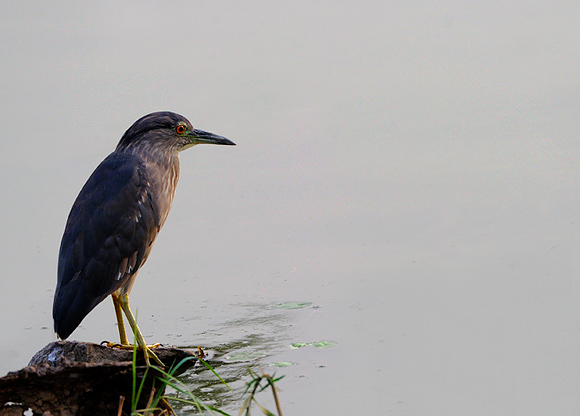
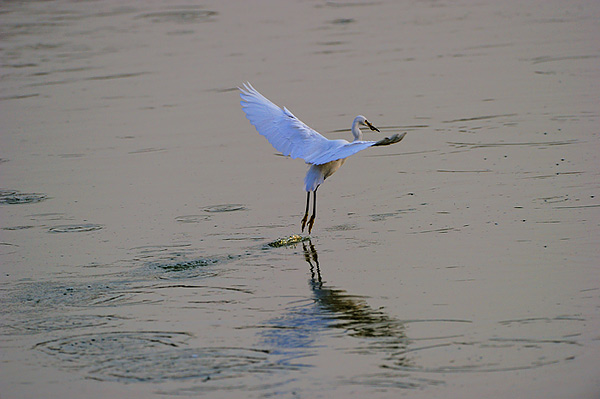
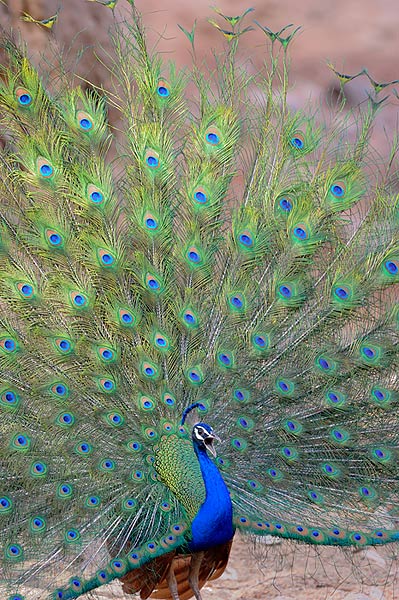
All of this stunning nature around me I was in heaven! and I had’nt even seen my first Tiger yet. As we drove around our given zone, I saw so much different and interesting wildlife it was amazing, just then my guide said ‘Leopard’ and pointed up and to my left I swung the camera,600 and tripod around and just managed a few images before this very shy, rare animal vanished, Salim told me you must be lucky Craig, sightings of leopards are rare here with around 30 living here they are very hard to see and I had just seen this beautiful animal with its real distinctive face and big, round eyes. Wow!
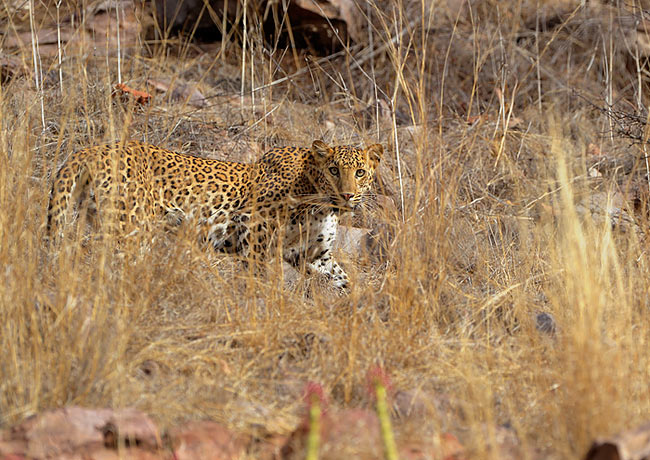
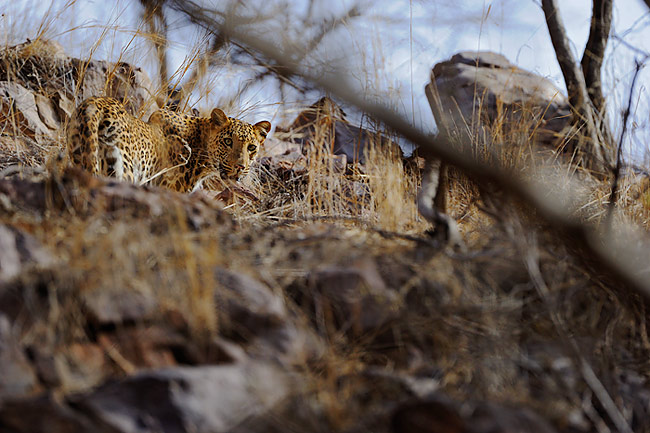
He was gone in a flash but I really felt blessed I’d seen a Leopard, indeed very lucky, what a first morning. The safaris are from 6-10am and 3-6pm in the evening, and on my first morning we were in the final hour when we spotted my first ever, wild Tiger, I froze for a second, stood up and there she was, T17, a 3 year old female walking along the dirt tracks the jeeps use, with the Tigers using them too.

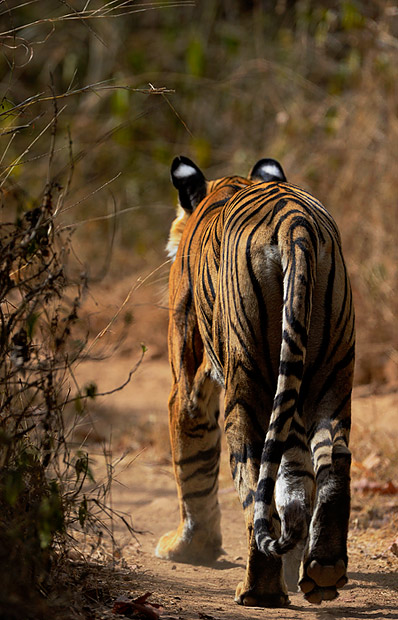
As we got closer the sheer size of the Tiger became very apparent to me, Salim went down another track hoping to get in front of her should she continue on this path, we managed to get in front and a nervous wait of a few seconds to see if she’d gone into the forest or had carried on,then I heard something,she was there walking towards our jeep T17 full front on view,wow she was beautiful,she was heading to a very small pool of water to our left, I captured her drinking with the 600, I then switched to another camera with my wide angle on (24-70mm) as she had finished drinking and carried on walking our way. I wanted to capture her within this habitat as she came closer, my heart was beating so fast I could feel the beats in my neck!!
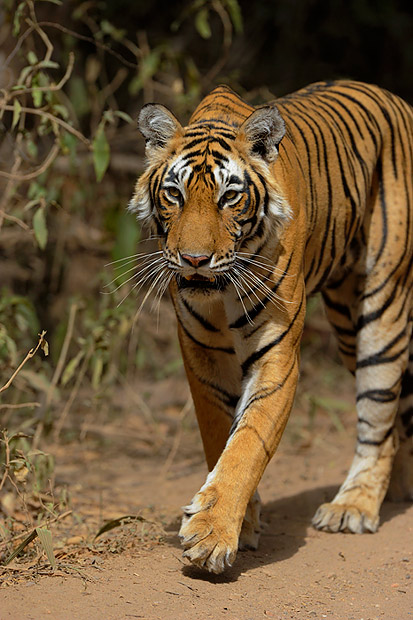
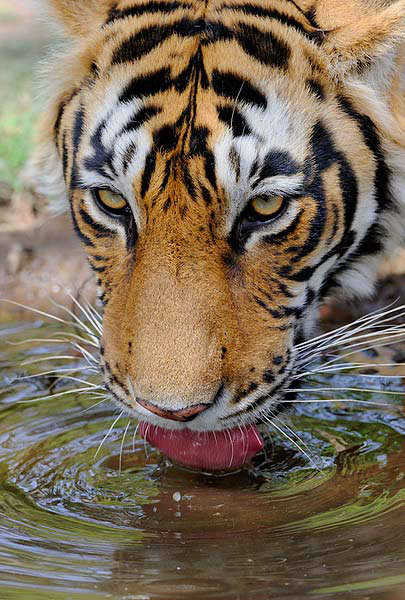
T17, female tiger walking towards me, taken with a wide-angled lens as I leaned out of the jeep for a lower view point, it was a beautiful, surreal moment for me and one I will never forget, after she’d gone my driver and guide drove us back while I just sat there going over what I had just witnessed in my head, completely amazed. Just after the image below was taken she went into cover and was not seen again, but the memories will be with me forever.


My first encounter of a Bengal Tiger was just amazing, thirty years ago when I was eight my interest in Tigers began after receiving a animal book with a roaring Tiger on the front cover, so on this day my dreams had come true with a beautiful moment I managed to capture not only with my eyes but also with photographs. I am completely taken with these beautiful animals and with each safari I would see even more of the Tigers of Ranhambhore, some days I’d see 4 in a single trip, not all can be photographed as with the dense vegetation and the brilliant disappearing skills its a lot harder than you think to compose a good image with the small amount of time you get upon first seeing these stunning animals.
That evenings safari brought more beautiful encounters for me as I was living up to my nickname of ‘Lucky‘. We were in another zone now, and we lay in wait at a popular watering hole used by 1 or 2 different Tigers. Nearly an hour had gone by and nothing, the temperature was 45c and I was melting, 2 litres of water in the morning and two litres in the afternoon, a must as dehydration can creep up on you without warning, I also had glucose/mineral salts to to replace what my body was losing, it was a constant battle to rehydrate yourself and be on tip top form for the Tigers and the rough roads. The surrounding animals give a warning that you don’t forget when a Tiger is about and I heard this, the next thing a male Tiger, T7 I was told was heading for the waterhole, but for a moment had noticed the jeep and give me a look I managed to capture below.


Much bigger than the females, with a totallydifferent attitude/approach I found, quite shy on one hand but outwardly more aggressive too. These two images clearly show just how well camouflaged they are within their own natural habitat which amazed me, because away from these surroundings they really stand out with the beautiful markings.
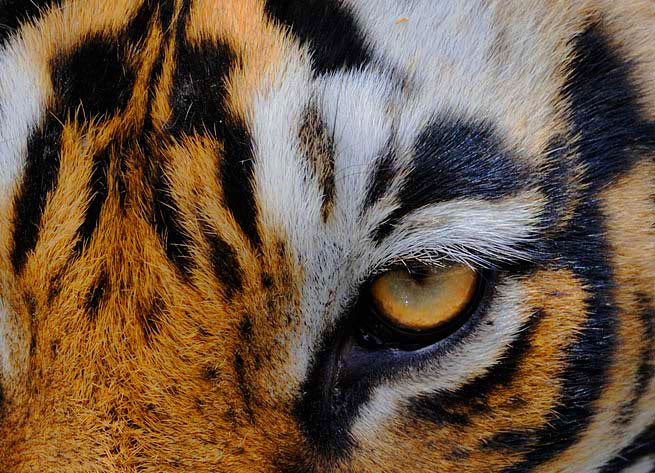


The first two days were brilliant and my first sighting was amazing. Over the next few days I will update my blog with the rest of the special days I spent there, in the meantime I hope you enjoy these images of this most beautiful of animals, the Bengal Tiger.

Read full post


